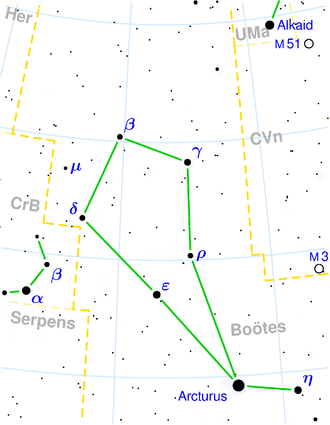NGC 5248
| Galaxy NGC 5248 |
|
|---|---|

|
|
| Image taken with a 32-inch telescope | |
| AladinLite | |
| Constellation | Bear keeper |
|
Position equinox : J2000.0 , epoch : J2000.0 |
|
| Right ascension | 13 h 37 m 32.024 s |
| declination | + 08 ° 53 ′ 06.64 ″ |
| Appearance | |
| Morphological type | (R) SB (rs) bc / Sy2 / HII |
| Brightness (visual) | 10.1 mag |
| Brightness (B-band) | 10.9 likes |
| Angular expansion | 6.2 ′ × 4.5 ′ |
| Position angle | 122 ° |
| Surface brightness | 13.6 mag / arcmin² |
| Physical data | |
| Redshift | 0.003839 ± 0.000002 |
| Radial velocity | (1151 ± 1) km / s |
|
Stroke distance v rad / H 0 |
(50 ± 4) x 10 6 ly (15.4 ± 1.1) Mpc |
| history | |
| discovery | Wilhelm Herschel |
| Discovery date | April 15, 1784 |
| Catalog names | |
| NGC 5248 • UGC 8616 • PGC 48130 • CGCG 073-054 • MCG + 02-35-015 • IRAS 13350 + 0908 • 2MASX J13373206 + 0853062 • GC 3615 • H I 34 • h 1650 • NVSS J133732 + 085309 • WISEA J133732. 02 + 085306.9 | |
NGC 5248 is an active bar-spiral galaxy with extensive star formation regions of the Hubble type SBbc and is located in the constellation Bootes on the border with the constellation Virgo. It is estimated to be 50 million light years from the Milky Way and about 95,000 light years in diameter.
In the same area of the sky is u. a. the galaxy IC 900 .
The object was discovered on April 15, 1784 by Wilhelm Herschel .
Web links
Commons : NGC 5248 - collection of images, videos, and audio files

